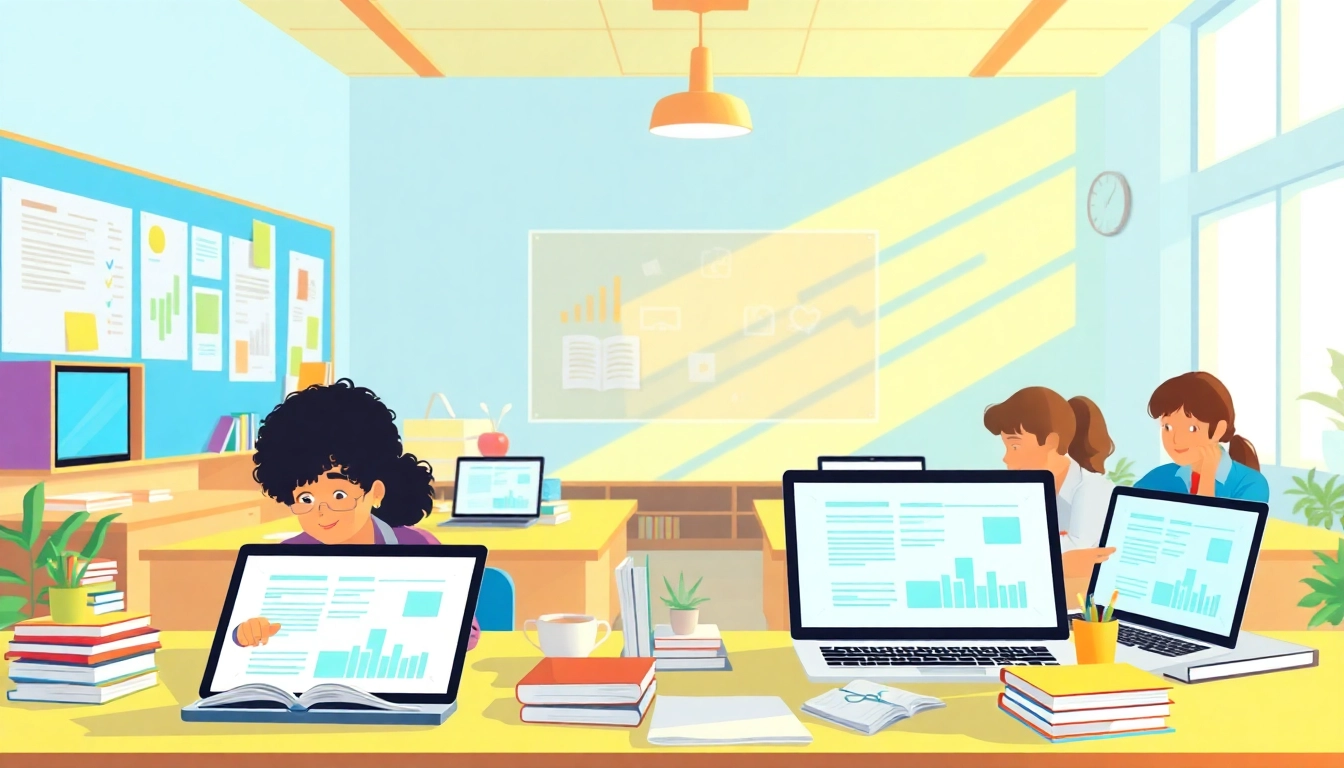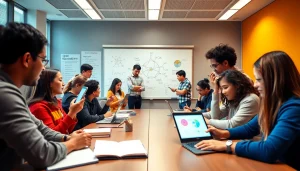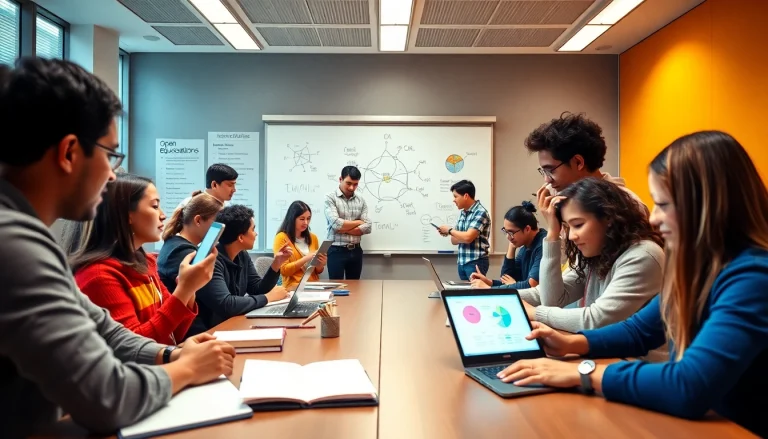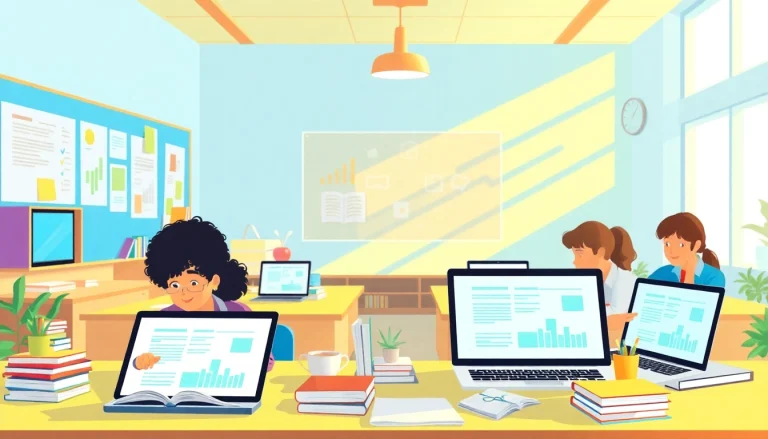Understanding Educational Resources
In today’s rapidly evolving educational landscape, educational resources play a pivotal role in shaping the learning experience for both educators and students. These resources encompass a wide array of materials and tools designed to facilitate and enhance the educational process, providing valuable support in various learning environments—from traditional classrooms to online platforms. This comprehensive guide explores the definition, importance, types, and effective utilization of educational resources, alongside examining current trends and addressing potential challenges associated with their use.
What Are Educational Resources?
Educational resources refer to a diverse set of materials and tools utilized for teaching and learning purposes. These resources can take many forms, including textbooks, digital content, open educational resources (OER), videos, online courses, and interactive software applications. The primary aim of these resources is to provide learners with the necessary support to acquire knowledge, develop skills, and engage meaningfully with the subject matter.
The Importance of Educational Resources in Learning
The significance of educational resources cannot be overstated. They serve several essential functions that enhance the learning process:
- Facilitation of Learning: Educational resources provide structured content that helps guide learners through complex subjects, making information more accessible and understandable.
- Differentiation: By offering a variety of resources, educators can cater to diverse learning styles and preferences, ensuring that all students have equal opportunities to succeed.
- Engagement: Interactive and multimedia resources engage learners more effectively than traditional methods, often leading to higher retention and comprehension rates.
- Accessibility: With the growth of online resources, educational materials are increasingly available to a broader audience, breaking down barriers to learning.
Types of Educational Resources Available
Educational resources can be categorized into various types, each serving different purposes and audiences:
- Text-Based Resources: These include textbooks, e-books, scholarly articles, and research papers, providing foundational knowledge and context.
- Multimedia Resources: Videos, podcasts, webinars, and interactive simulations that make learning dynamic and multisensory.
- Open Educational Resources (OER): Freely accessible and openly licensed learning materials that can be freely used, modified, and shared.
- Online Platforms and Tools: Course management systems, learning management systems (LMS), and collaborative tools that support the delivery and management of educational content.
- Assessment Tools: Quizzes, tests, and rubrics used to evaluate learner performance and understanding.
How to Effectively Utilize Educational Resources
Identifying Your Learning Needs
To maximize the benefits of educational resources, it’s essential to identify specific learning needs. This involves evaluating:
- Learning goals: Defining what knowledge or skills students should acquire.
- Learning styles: Understanding individual student preferences to tailor resources accordingly.
- Content gaps: Determining areas where learners require additional support or materials.
Integrating Resources into Your Curriculum
Once learning needs are identified, educators can seamlessly integrate resources into their curriculum by:
- Aligning resources with curriculum objectives to create a coherent learning experience.
- Utilizing a blended approach that combines various resource types (e.g., textbooks alongside videos).
- Encouraging experiential learning through practical activities that involve the use of selected resources.
Assessing the Impact of Resources on Learning
Regular assessment of the effectiveness of educational resources is vital in ensuring they meet learning objectives. This can be achieved through:
- Feedback from students on the usability and relevance of materials.
- Tracking academic performance over time to gauge improvement.
- Adjusting resources based on assessment results to enhance learning outcomes continually.
Popular Platforms for Educational Resources
Exploring Open Educational Resources (OER)
Open Educational Resources (OER) have revolutionized access to educational materials by providing free resources that can be downloaded, adapted, and shared. Some prominent platforms for OER include:
- OER Commons: A public digital library that hosts a wide array of OER across different disciplines.
- OpenStax: Provides free, peer-reviewed, openly licensed textbooks that are available in various formats.
- Curriki: An education network that links educators with OER and allows them to create and share educational content.
Comparing Paid vs. Free Educational Resources
While free educational resources offer accessibility and cost savings, paid resources often come with additional benefits such as:
- Enhanced quality control and curation, ensuring that materials are reliable and up-to-date.
- Comprehensive support services, including training for educators on effective resource integration.
- Advanced features, such as interactive assessments or tailored learning paths.
As educators weigh the options, considering the specific needs of their learners will guide them in choosing the most appropriate resources.
Finding Subject-Specific Resources
Educational resources often vary by subject area. Platforms like Khan Academy for mathematics and Coursera for a range of topics provide specialized materials tailored to specific disciplines. It’s crucial for educators to explore:
- Specialized websites and databases pertaining to their subject area.
- Professional organizations that may provide resources, workshops, and networking opportunities.
- Peer-reviewed journals and publications that offer updated research findings and teaching techniques.
Challenges in Accessing Educational Resources
Navigating Quality Issues
One of the significant challenges educators face is navigating the quality of available resources. With the abundance of information online, it’s crucial to assess materials critically. To address this, educators should:
- Seek resources from reputable organizations and established educators.
- Review feedback and ratings from other users to gauge effectiveness.
- Test materials in small groups before widespread implementation to ensure they meet educational standards.
Overcoming Accessibility Barriers
Accessibility remains a persistent issue in education. Students with disabilities may encounter difficulties accessing certain materials. Solutions include:
- Utilizing resources that comply with accessibility standards, such as WCAG (Web Content Accessibility Guidelines).
- Offering alternative formats, such as audio versions of written content or captioning for videos.
- Collaborating with learning support services to provide necessary accommodations for all students.
Addressing Technological Limitations
Technological disparities can hinder students’ access to educational resources. To mitigate these challenges, schools and educational institutions should:
- Invest in infrastructure upgrades that support reliable internet access and technological tools.
- Provide training for both educators and students on effective technology use and tool navigation.
- Develop partnerships with local organizations to provide resources to underserved populations.
Future Trends in Educational Resources
The Role of Technology in Educational Resources
As technology evolves, so does the potential for innovative educational resources. Future trends may include:
- Increased use of artificial intelligence to tailor learning experiences and provide personalized content.
- The integration of augmented reality (AR) and virtual reality (VR) into educational content for immersive learning experiences.
- The rise of gamification in educational resources, engaging students through game-like elements.
Collaborative Learning and Resource Sharing
The concept of collaborative learning is gaining traction, emphasizing peer-to-peer interaction and resource sharing. Platforms supporting collaborative educational practices may lead to:
- Enhanced knowledge sharing and community building among students and teachers.
- Increased adaptability of resources through collective input and improvements.
- Opportunities for global collaboration, enabling cultural exchange and diversified learning experiences.
Innovations in Open Educational Resources (OER)
OER continues to evolve, with emerging practices that include:
- Dynamic content that updates in real-time, ensuring learners access the most current information.
- Increased emphasis on multilingual resources to support diverse learners worldwide.
- Integration of assessment tools within OER to provide immediate feedback and improve learning outcomes.













+ There are no comments
Add yours